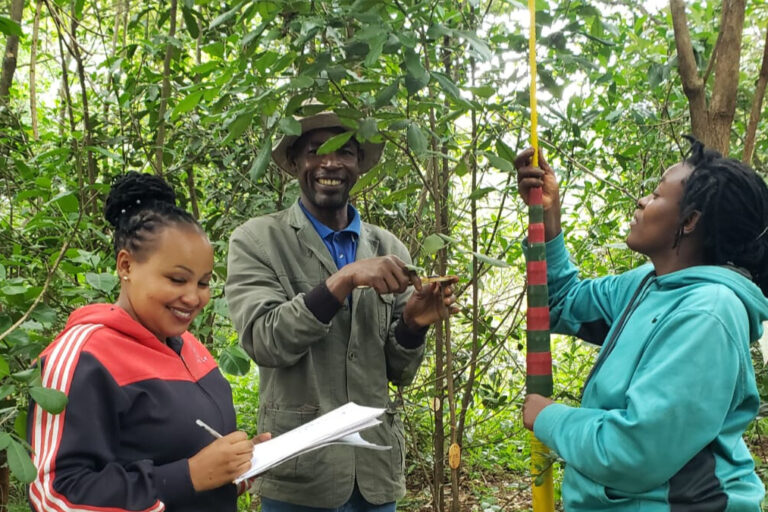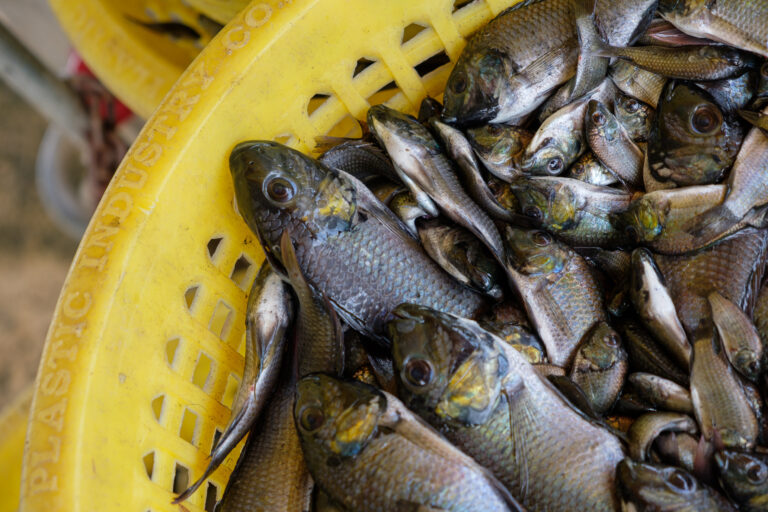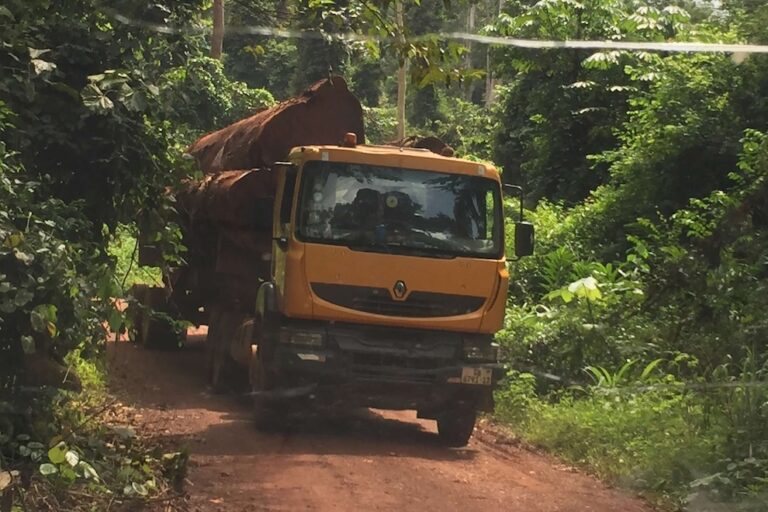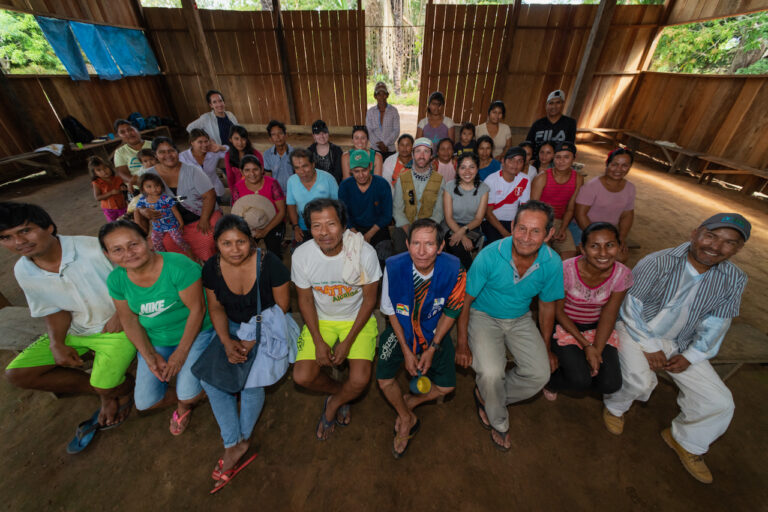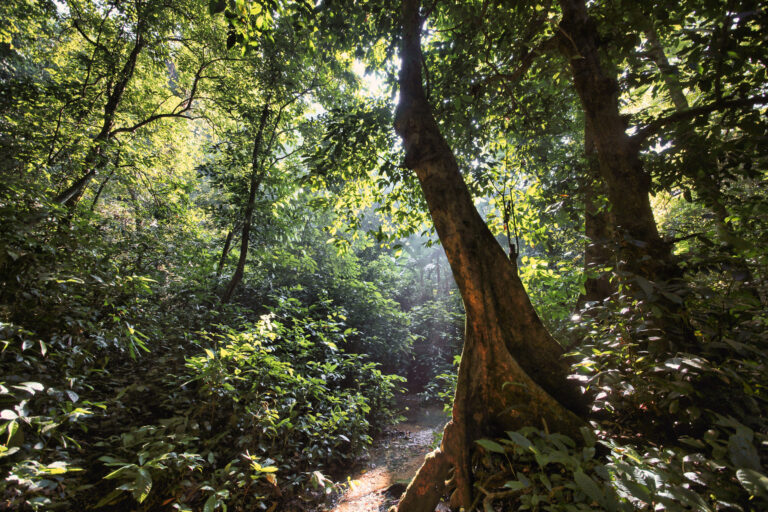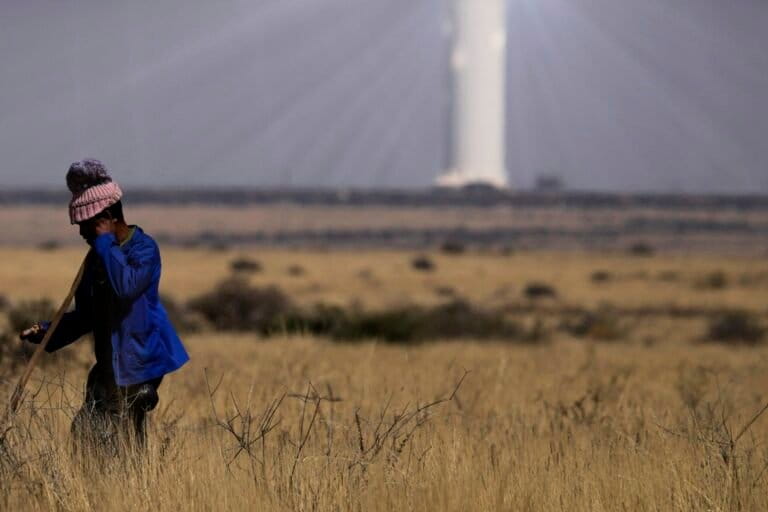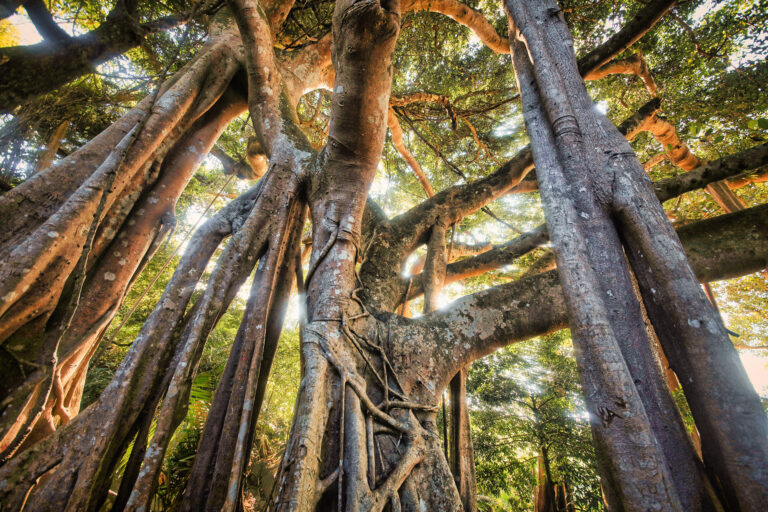- Five hydropower dams are currently being built in the Cardamom Mountains with reservoirs set to collectively span more than 15,000 hectares (37,065 acres) across protected forests.
- Three of these new dams encroach on forests where REDD+ projects are currently operating, pitting “green” energy infrastructure against conservation goals.
- Residents living nearby one of the dam sites fear that history may repeat as hydropower dams have typically been used to illegally extract valuable timber.
This is the second of a two-part Mongabay series about hydropower dams in the Cardamom Mountains. Read Part One.
PURSAT/KOH KONG, Cambodia — “Fifteen years ago, this whole village was forest,” said Phan, sipping an energy drink and leaning back in his plastic chair. “At first, I didn’t want to stay here because the road conditions were so bad, and even though we had some money, it was difficult to find food and to survive.”
But those times, and much of the forest in Pursat province’s O’Soam commune, are long gone as hydropower dams have prized open the remote Cardamom Mountains since 2012, literally paving the way for communities like Phan’s.
Plumes of dust rose from the red dirt road as Phan sat watching the construction crew working a few hundred meters farther down the road, waiting for them to rehabilitate the section in front of his small wooden home.
Phan, who requested neither his full name nor the name of his village be published for fear of retribution from authorities, has lived in O’Soam for more than 15 years.
“We’re all migrants here; we cut the forests to build our houses here. We can’t do that now,” he said, chuckling to himself. “This whole area is under the management of a conservation NGO, Wildlife Alliance.”

O’Soam commune sits in the southwestern province of Pursat, on the border of Koh Kong province, but it’s also nestled within the sprawling Phnom Kravanh National Park, a colossal protected area that stretches more than 926,000 hectares (2.3 million acres) across the Cardamom Mountains in Cambodia. The park is also home to the Southern Cardamom REDD+ project, which spans 465,839 hectares (1.15 million acres) within Phnom Kravanh National Park and is jointly managed by the New York-headquartered Wildlife Alliance and the Cambodian Ministry of Environment.
The conservation goals of the NGO and its government partners appear to be at odds with the broader aims of the Cambodian government, which in the past decade has set about damming the Cardamoms at an alarming pace.
When reporters visited in April, workers were preparing the road in O’Soam for concrete — a welcome change for Phan and his family — but the residents in this small village are incidental beneficiaries of the road improvement. The main purpose for the road is to transport heavy machinery needed to build the 70-megawatt Stung Russei Chrum Kandal hydropower dam (the Middle Russei Chrum River dam).
The 2,898-hectare (7,160-acre) reservoir of the dam is planned to jaunt some 20 kilometers (12.4 miles) out east into the vast untamed rainforest of Phnom Kravanh National Park, which will need to be cleared ahead of inundation. A failure to properly clear a hydropower dam’s reservoir basin of vegetation can lead to increased methane emissions as the organic matter decays once submerged in water. This in turn can produce harmful algae blooms in a process known as eutrophication, further degrading the waterways on which the dam is built. Clearing these reservoirs, however, creates a lucrative opportunity for dam developers and companies hired to cut the vegetation, with the timber from one nearby dam’s reservoir valued at roughly $450,000 in 2022.
There are now five hydropower dams operational and another five under construction in the Cardamoms. The reservoirs of these five new dams alone span more than 15,000 hectares (37,065 acres) collectively, but that’s assuming the dam developers stick to their plans.

More dams, less forest
With five new dams being built, the situation looks bleak for the Cardamoms’ forests.
Already at the site of one of these new dams— the Stung Meteuk, currently being built some 50 km (30 mi) west of O’Soam — Mongabay uncovered what appears to be deliberate trespass logging in the surrounding protected forests where Wildlife Alliance is attempting to establish a new REDD+ project in Phnom Samkos Wildlife Sanctuary.
At yet another hydropower dam —Stung Tatai Leu (Upper Tatai River), which is currently being built 25 km (15.5 miles) south of O’Soam — Mongabay found timber from the site being traded by a logging network operating out of the Koh Kong provincial prison. A third new dam being built, the Stung Pursat 1, featured in a 2018 study that warned excessive deforestation could impair the functionality of hydropower dams in the Cardamoms.
Meanwhile, the Middle Russei Chrum dam and, 22 km (13.7 mi) south, the 100 MW Stung Veal Thmor Kambot project were both approved for construction by the government in November 2023 and are anticipated to result in significant deforestation within Phnom Kravanh National Park.

But this is nothing new. As Phan has experienced directly, hydropower development in Cambodia has often gone hand in hand with illegal logging and timber laundering.
“I’ve been here 15 years; I was here during Try Pheap’s rosewood trading days,” Phan said, lowering his voice.
Try Pheap, a timber baron and adviser to former Prime Minister Hun Sen, made his name by logging the critically endangered Siamese rosewood (Dalbergia cochinchinensis) while clearing the reservoir for the Stung Atay hydropower dam just 15 km (9.3 mi) north of the Middle Russei Chrum dam.
Despite the Atay dam’s 4,179-hectare (10,327-acre) reservoir basin holding only an estimated 1,000 cubic meters (35,300 cubic feet) of rosewood, Pheap was estimated to clear 200,000 hectares (494,200 acres) of protected forest, selling roughly 16,000 m3 (565,000 ft3) of rosewood for some $227 million during the early 2010s.
The Atay dam is operational now and the damage is done, but there is still time for conservationists to ensure that more of the vast forests don’t meet a similar fate.

According to Phan, rangers from Wildlife Alliance have visited the site of the Middle Russei Chrum dam, “to check the timber situation,” but as developers are not yet clearing the reservoir, there is no large-scale forest clearance underway.
The developers in question are Khmer Electrical Power, owned by Kok An, a ruling party senator and a tycoon famed for making his fortune in casino development, imported beers, bottled water and tobacco. Khmer Electrical Power is building both the Middle Russei Chrum and the Veal Thmor Kambot in Koh Kong province.
An’s reputation for wealth, power and connections to the highest levels of government have afforded him an immunity, even after he was tied to human trafficking in recent years.
Khmer Electrical Power could not be reached by phone or email.
“I don’t know if Kok An will do like Try Pheap,” said Phan, in reference to Pheap’s plundering of the Cardamoms while developing the Atay dam.
“We have not seen any timber trucks yet and O’Soam still has a lot of forest,” he added. “But the wealthy people in our society can access these forests; for people like me, we can’t even have land to farm.”

New roads lead to old problems
The 2,898-hectare reservoir of the Middle Russei Chrum dam directly abuts the boundary of the Southern Cardamom REDD+ project area, and when Mongabay reporters visited the site in April, the crisscrossing network of access roads were dotted with dozens of pieces of heavy equipment, churning up the mountains.
Situated in Tatai Leu commune, just south of O’Soam, the Middle Russei Chrum dam’s reservoir sits outside of the REDD+ project area, but there are already roughly 15 km of access roads can be seen via satellite imagery running from the boundary of the reservoir into the forest from which the project aims to sell carbon credits.

Meanwhile, in Koh Kong province’s Pak Khlang commune, where the Veal Thmor Kambot dam is also being built by Khmer Electrical Power, the entirety of the dam is being built directly inside the REDD+ project.
The 314-hectare (776-acre) reservoir has not yet seen any large-scale forest clearance, but already satellite imagery shows some 12.5 km (7.8 mi) of red-dirt roads have sprung up around the site of the dam, which was abuzz with activity when Mongabay reporters managed to access the site in April.
But neither the Khmer Electrical Power’s dams in Koh Kong province displayed the same extent of trespass logging as that witnessed at the Meteuk hydropower dam farther west. Nor did reporters see timber depots similar to the one identified at the Meteuk construction site when visiting the Middle Russei Chrum and Veal Thmor Kambot.

All around the dam, other infrastructure developments such as bridges and roads were being built, further fragmenting the rainforest and opening up access to the valuable timber that still resides within the Cardamom Mountains.
Many of the signs erected in conjunction with these projects bore Chinese characters — most had no Khmer or English signage at all — suggesting an array of Chinese-funded developments are set to sweep through Phnom Kravanh National Park, piling more pressure on Wildlife Alliance’s REDD+ project.
Forest cover loss within the national park reached a peak in 2016, when roughly 4,760 hectares (11,760 acres) were cleared, although Global Forest Watch data show that 2023 was the second-worst year on record, with some 4,560 hectares (11,270 acres) of forest cover lost.
“With the previous Cardamom dams, it was disappointing to see how ineffective the protected areas were in preventing large-scale extractive infrastructure projects, such as large dams,” said Mira Käkönen, a research fellow at the Australian National University’s Crawford School of Public Policy who has written extensively on hydropower developments in the Cardamoms.
There was an additional irony, Käkönen said, to the fact that these dams were also part of the Clean Development Mechanism, a U.N. scheme that aims to support the financing of clean energy sources. This was supposed to make the dams more sustainable than what would be achieved by national regulatory measures, she added.
Käkönen said that if REDD+ projects fail to prevent deforestation linked to hydropower dams then the project developers should be transparent about their assessments of the impact so that informed decisions about carbon credit purchases are possible.

An unclear future for the forest
Wildlife Alliance’s executive director Suwanna Gauntlett said that 16% of the Middle Russei Chrum’s land area will be in the Southern Cardamom REDD+ project area and that patrol units in O’soam will monitor this, while the remainder of construction is planned outside the project area. Rangers from both Wildlife Alliance and their partners in the Ministry of Environment will be monitoring the clearance of the reservoir at the Veal Thmor Kambot when it begins, she added.
Gauntlett confirmed that patrols around the Upper Tatai hydropower dam have to date confiscated 1.5 tons of illegally harvested luxury wood and almost 15 m3 (530 ft3) of construction timber.
The deforestation inside REDD+ areas will result in fewer credits being issued, she said, but this won’t affect the net emissions reduction each credit represents.
“And while we regret the government’s decision to proceed with these construction projects,” Gauntlett said, “we recognize this sits within a broader context of unavoidable trade-offs that all nations face as they chart a sustainable development path.”

Officials from the Ministry of Environment, Ministry of Mines and Energy and the Koh Kong provincial administration all declined to comment.
The Southern Cardamom REDD+ project is still suspended from issuing new credits, pending the outcome of an investigation into alleged human rights abuses being conducted by Verra, the carbon credit certifier that Wildlife Alliance works with.
At press time, Verra had not responded to questions sent by Mongabay about the dams’ impacts on REDD+ efforts in the Cardamoms.
While Käkönen noted that most dams in the Cardamoms have proven less harmful than others within Cambodia that have resulted in mass forced evictions and violent protests, the damage done to biodiversity in important protected areas shouldn’t be overlooked.
“Clearly the pattern of timber laundry established by the previous dams deserves attention and serious preventive measures,” she said, pointing to the contrast between the extensive logging of valuable timber around previous dams while many reservoirs had never been fully cleared before being inundated. “I guess there is similar irony, if this happens again, now with dams situated within REDD+ zones.”

Chhen Kaen, O’Soam commune chief, told reporters during an interview in April there was no illegal logging linked to the Middle Russei Chrum, but the caveat was that the company wasn’t clearing the reservoir at that time.
He directed reporters to the district and provincial authorities, stating that as commune chief, he’d received no formal information regarding the dam.
Few within the Pursat and Koh Kong provincial administrations would speak, but Veal Veang district governor Eang Voeung agreed to meet with reporters at the district hall in Pursat province, saying he was aware that Kok An has hired Chinese engineering contractors to help build the Middle Russei Chrum and Veal Thmor Kambot dams, but he didn’t know the Chinese company’s name.
“There have been no new documents issued, the [Middle Russei Chrum] dam has been planned for a long time,” he said, adding that he was aware of logging that was linked to the upper and lower dams on the Russei Chrum River that make up a three-part cascade of dams through the Cardamoms.
“Try Pheap’s company M.D.S. was in charge of clearing the basins for the other Russei Chrum dams, but I’m not sure if that’s [the same] for the new one or not,” Voeung said.
Initially jovial in the runup to Khmer New Year, Voeung grew more concerned when reporters asked about the hydropower developments within the Cardamoms.
“I think about it [the risk of logging] often,” he said in a guarded tone. “I was just a regular citizen when Try Pheap was clearing the Atay dam, but the national level of government is more knowledgeable than us; even if we didn’t approve, they would approve and still go ahead.”
Banner image: Significant deforestation was linked to the Lower Russei Chrum dam, which has been operational in Koh Kong province since 2015. Image by Gerald Flynn / Mongabay.






